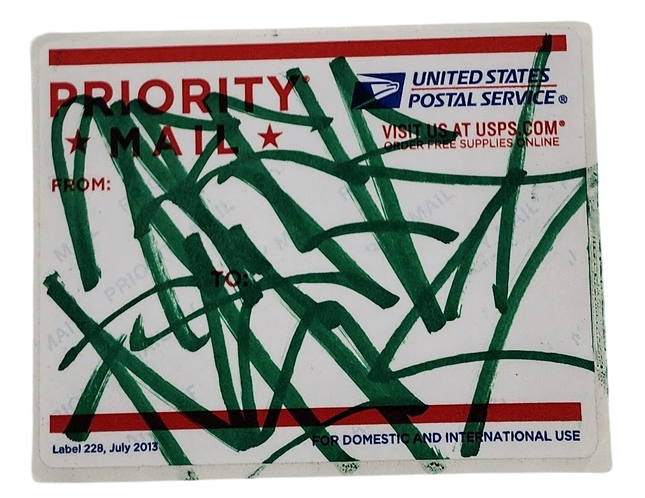
Business Jobs & Work

Saber Priority Mail 228-2013 Slap-Up Label Sticker Original Tag Art by Saber
Priority Mail 228-2013 Slap-Up Label Sticker Original Tag Art by Saber Original Permanent Drawing Art on USPS Mailing Label by Graffiti Artist Modern Street Artwork. 2020 Signed by Tag Original Slap Up Graffiti Art Tag 4.5x3.5 Color Marker on the USPS United States Postal Service Priority Mail Label 228-2013. Street Art's Intersection with Everyday Objects The 'Priority Mail 228-2013' slap-up label sticker featuring original tag art by Saber is a remarkable embodiment of how modern street artwork intersects with everyday objects. Saber, a recognized name in graffiti, transforms a mundane USPS mailing label into a canvas for his artistic expression. This piece, a 4.5x3.5 color marker on the USPS United States Postal Service Priority Mail Label 228-2013, is 2020 original, showcasing the artist's unique ability to repurpose everyday items into art. Saber's Artistic Commentary on Communication This work is more than an act of creative repurposing; it serves as a commentary on communication and how messages are transmitted in the modern world. By choosing a Priority Mail label, Saber taps into the theme of urgency and the importance of messages that such labels signify. His artwork disrupts this narrative of swift communication with a personal and cryptic tag, suggesting that amidst the rapid exchange of information, there are layers of meaning waiting to be uncovered. The tag, applied with a color marker, flows across the label in a style reminiscent of Saber's street art murals. The vibrant green strokes against the white and red of the Priority Mail label create a stark contrast, symbolizing perhaps the clash between the institutional and the individual, the standardized and the personalized. The use of a USPS label also points to the public domain as a space ripe for artistic intervention, where the artist can leave a mark that is both provocative and publicly accessible. Modern Street Art and the Culture of Slap-Up Tags Saber's choice of a slap-up label adheres to the culture of street pop art, where quick, spontaneous creations are integral to the art form. Slap-up tags are known for their immediacy and are often used by artists to leave a quick signature in public spaces. This piece emulates that culture, with Saber's tag being a literal and figurative mark of the artist's presence. In the context of street pop art and graffiti artwork, Saber's 'Priority Mail 228-2013' label is a testament to the genre's evolving canvas. It moves beyond walls and subway cars to find a place on portable, everyday items, thus expanding the reach of street art. Saber, an American artist, is known for such innovations, constantly challenging the boundaries of where and what street art can be. In sum, the artwork on the Priority Mail label is a statement on the power of street art to transform the mundane into the extraordinary. It captures the essence of street pop art's spontaneity and Saber's role as a pioneer in the movement. The tag, a signature of the artist's identity, reminds of the personal touch in an increasingly impersonal world dominated by digital communication and standardized services.
$24.00


